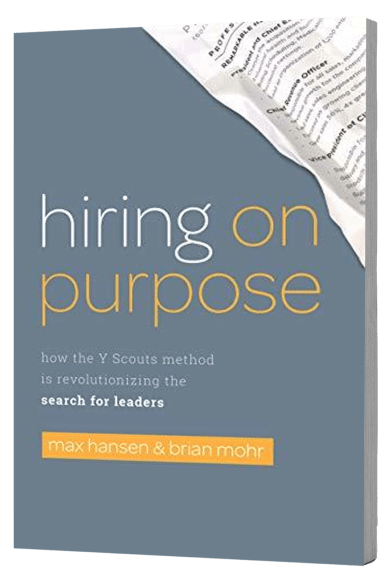Table of Contents
ToggleAs a nonprofit executive search firm, Y Scouts helps unite organizations with exceptional executive directors who align with the organization’s mission. But how do you know when to hire an executive director?
Choosing when to hire an executive director is a serious decision for any nonprofit organization. Some organizations appoint an executive director right from the start. Others chose to take on an executive director after the organization is already established. And then, there’s always the need for an executive director if your current ED is stepping down.
If you’re deciding when to hire an executive director, here are four signs that your organization is in need of an ED.
1. Your organization’s founder lacks nonprofit experience
While your organization’s founder may have great ideas, he or she may not have the experience necessary to put these ideas into action. Hiring an executive director with nonprofit experience can help your organization execute decisions, raise much need funds, and develop new ideas.
In some cases, hiring an executive director with a background in the industry also helps your organization appear more professional to people outside your nonprofit (especially donors!). If current leadership has difficulty speaking with donors or making business decisions, hiring a savvy executive director may help your organization in these areas.
2. Your board wants to shift their focus
Even if your founder has the ability to run the organization as an executive director, he or she may not be interested in doing so. If your board members wants to focus their energy on other areas of the organization, such as fundraising, it may be time to hire an executive director. An ED can handle the business aspects of the organization, giving members of the organization and board members a chance to maximize their strengths.
3. Your nonprofit needs a clear leader
If employees appear confused about the organization’s goals or operations, your nonprofit may benefit from hiring a different executive director. An ED can establish organizational-wide goals and make them known, guide employees at all levels of the organization, and serve as the leader for your nonprofit. Having a strong leader for your nonprofit can alleviate employee confusion and give your organization a united voice.
4. You want to encourage growth
Sometimes an executive director can focus too heavily on keeping the organization running and don’t spend enough time innovating. A lack of innovation can lead to stagnation, which can create a serious problem for your nonprofit. By hiring a new executive director to make sure your organization stays afloat, you can spend more time developing ideas and growing your nonprofit.
You might be interested in these other posts about hiring an Executive Director:
– What to Look For in an Executive Director
– How to Hire an Executive Director
– 5 Specific Executive Director Interview Questions
– What to Pay an Executive Director
How did you decide when to hire an Executive Director? Contact us to share your comments.
Y Scouts is a purpose-based, performance-proven leadership search and development firm focused on transforming how people and organizations connect to work that matters. When you’re ready to hire a new leader, Contact Y Scouts. If you are looking for your next leadership role within a purpose-driven, performance-focused organization, please join the Y Scouts Leadership Community.
Frequently Asked Questions
Q: Do nonprofits need executive directors?
A: Yes, nonprofits usually need executive directors. They play a key role in running the organization, managing staff, and making sure everything aligns with the nonprofit’s goals. Executive directors handle things like fundraising, overseeing programs, and building community connections.
Q: What percentage of a nonprofit budget should be the executive director?
A: For nonprofits, the executive director’s salary usually depends on the budget size. For organizations with budgets under $1 million, it’s common for the executive director’s salary to be about 10% of the budget. For larger nonprofits with budgets in the tens of millions, this percentage typically drops to between 1% and 2.5%.



